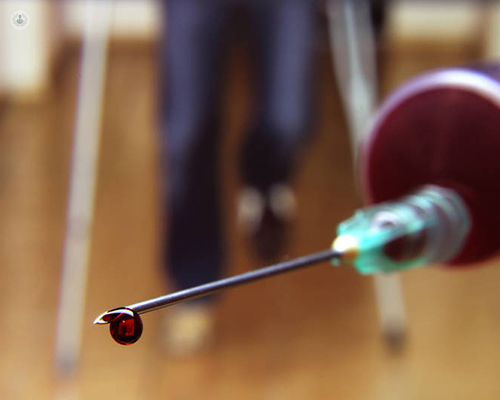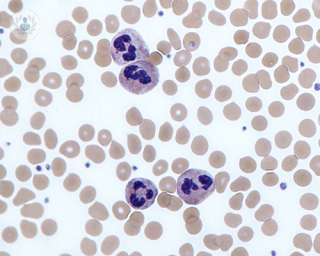Rare blood disorders
What are rare blood disorders?
Blood disorders can affect the red blood cells, which carry oxygen to the body’s tissues, the white blood cells, which fight infections and the platelets, which help blood to clot. When the normal process of blood cell growth and development does not function properly, some certain types of cells are produced in large quantities or in an abnormal form. This causes blood cancers or other disorders of the blood.

What are the different types of rare blood disorders?
There are two different types of rare blood disorders, which are divided into the sub-categories:
1. Myeloproliferative disorders – these occur when the bone marrow starts to make too many red blood cells, platelets or certain white blood cells. These disorders are referred to as myeloproliferative neoplasms (MPNs). These diseases become worse as the extra cells build up in the blood and bone marrow over time and can cause bleeding, anaemia or fatigue. The different types of MPNs include:
- Polycythemia vera (PCV) – there is an increase in the number of red blood cells.
- Myelofibrosis – due to too many immature white and red blood cells and their red blood cells are deformed.
- Thrombocythemia – when there are too many platelets.
- Eosinophilia – these are another type of white blood cell, which is produced when the body has been exposed to an allergen or parasite.
- Mastocytosis
- Histiocytosis
- Paroxysmal nocturnal haemoglobinuria (PNH)
Any of these disorders means that the bone marrow is producing deformed white blood cells, which can lead to acute leukaemia.
2. Lymphoproliferative disorders – these occur when the body produces too many white blood cells (lymphocytes) or when the cells behave abnormally. These are found in the lymphatic tissue in the lymph nodes, spleen and thymus. These disorders are referred to as lymphoproliferative neoplasms (LPNs) and tend to occur in people with compromised immune systems. The different types of LPNs include:
- Hairy cell leukemia (HCL)
- Large granular leukaemia (LGL)
What are the symptoms of rare blood disorders?
Signs of the aforementioned disorders include:
- Anaemia
- Shortness of breath
- Pale skin
- Weakness and fatigue
- Bleeding in excess
- Sinus and skin infections
- Bruising easily
- Fevers
How are rare blood disorders diagnosed?
As a lot of the symptoms are thought to be other, more common, health problems, it is difficult to diagnose a rare blood disorder. For a thorough diagnosis with a specialist (haematologist), blood tests will be ordered and perhaps even a bone marrow biopsy. The samples will be sent to a lab for further testing made by a histopathologist, who will check under a microscope to look for cancer cells.
How are rare blood disorders treated?
Rare blood disorders are difficult to cure and the focus will be on trying to get the blood cells back to their normal levels. Some blood cell cancers do not cause symptoms and may not require treatment except constant monitoring. In other cases, and depending on which condition a patient has, the following may be required:
- Chemotherapy
- Radiation therapy
- Surgery
- Targeted drug therapy
- Stem cell transplants
- Blood transfusions
- Dietary changes
- Surgery
- Medications to stimulate the production of bone marrow and new red blood cells


